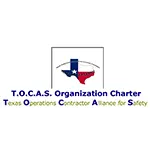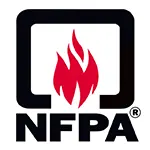Let us help you make sense of PSM / RMP!
My friend Brian Chapin will be offering an open-enrollment PSM/RMP class in Burleson, Texas, July 8th to 11th, 2025. Brian is an absolute pro in NH3 Refrigeration Process Safety. Anyone who attends will also get a FREE membership to SAFTENG. You can get more information on the class with this link.
CLICK HERE to Renew your Membership
CLICK HERE for a NEW Membership
CLICK HERE to see eligibility requirements for FREE Membership
If you have any questions, please contact m
SAFTENG has:
- Over 18,000 categorized unsafe acts/conditions and accident/injury photos
- Over 1,500 ppt's & doc's in the SAFTENG Library
- Over 4,000 Technical Articles on Process Safety, Emergency Response & OSH topics
- Over 450 videos (those not allowed on YouTube Channel)
Many THANKS to my NEW Members and those who CONTINUE to support SAFTENG:














July 31, 2011
A large metropolitan zoo maintenance employee may have disabled a warning light on a small train that derailed in 2009, sending 22 people to the hospital. The records are part of the evidence to be used in a February 2012 trial in which plaintiffs claim the zoo was negligent in its maintenance and operation of the train. According to records, a maintenance worker saw a co-worker remove...
Read More
July 30, 2011
Incident prevention represents the hallmark of our safety program. It is the primary reason why we emphasize adequate job planning, risk assessment, awareness and supervision. While we intend to become adept and masters of prevention, there are times when we may need to risk response to an incident situation and over response effectiveness may be such, that we create further problems if we are not...
Read More
July 30, 2011
Why do some companies succeed in safety and other’s do not?
Is it due to the high tech brand new equipment they bought?
…
HomeRead More »
Read More
July 30, 2011
A Community Fire and Burn Prevention Program Supported by the United States Fire Administration Federal Emergency Management Agency General Background Information Selected gasoline-related injury statistics Technical Background Fact Sheets for Community Distribution Portable gasoline containers Portable container and vehicle filling procedures Small engines and gasoline powered equipment Static electricity...
Read More
July 30, 2011
We’ve all been in a situation at one time or another where we were in a hurry, didn’t pay close attention to what we were doing, and ended up with an injury. Hurrying on the job can cause both minor accidents and life-threatening injuries. You may hurry dozens of times without incident, until finally it happens, an accident. The old adage, Haste makes waste, is all too true. Have you done any of these?...
Read More
July 30, 2011
Frittering away time and losing focus at work is easier than ever with internet games and social networking providing instant opportunities to become distracted and veer off task. Integrity dictates giving a job one’s full attention while on the clock and living up to the expectations for the job description. A high level of job satisfaction, job security and opportunities for...
Read More
July 30, 2011
Although some organizations have extensive safety standards, processes and procedures in place to keep us safe; Serious accidents and dangerous events can occur at anytime unless we continue to maintain consistent focus. To achieve a further step change in safety performance, every one of us must accept a greater level of responsibility, for our own safety and the safety of others and harmonisation...
Read More
July 30, 2011
It’s not just the hard hat, the gear and the glove;
That bring you home safe to the people you love.
…
HomeRead More »
Read More
July 30, 2011
The common term is “Near Miss ” but a more accurate term would be “near Hit ” in safety industry speak, a near miss is anaccident that almost happened.Suppose you are late for an appointment. You are in your car. The car is in reverse and you are about to back out of the driveway. Suddenly in your rear view mirror you notice an unfamiliar child’s toy lying in the...
Read More
July 30, 2011
D, I told you a few weeks ago that I had a poem I wrote about safety and was going to share with you all. Let me give you some quick back ground on how it came about. XXX is working on a program to help motivate our employees into making safety personal to each and everyone salary to hourly, home or at work, and to include our contractors. We are conducting training all through this year until everyone...
Read More
















